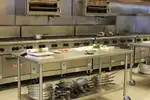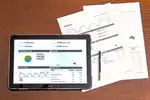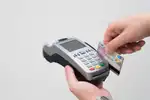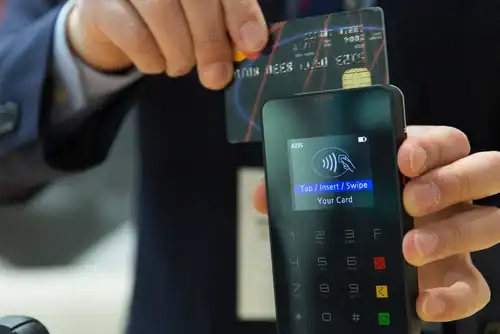What is a Restaurant Inventory Spreadsheet?
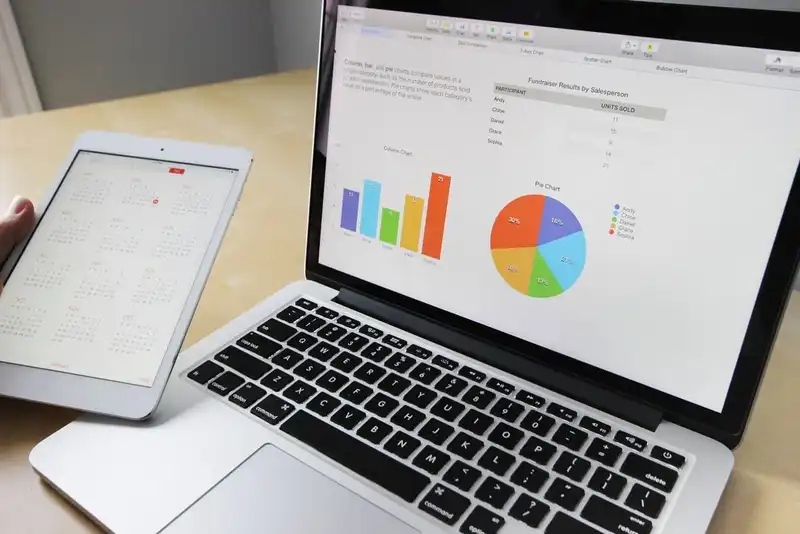
A restaurant inventory spreadsheet is a document that lists all of the food items that a restaurant keeps in stock. This spreadsheet is a valuable tool of the inventory management system that helps to manage restaurant inventory for the restaurant owner to check, cross off, or add items. An inventory spreadsheet can also be used to keep track of the total cost of supplies and ingredients. This restaurant inventory management tool helps calculate what food items need to be ordered and what items need to be sold.
This restaurant food inventory spreadsheet is designed to help restaurants with inventory tracking and inventory control thereby maintaining the kitchen's supply and demand. The inventory sheet includes ingredients and menu items.
For highly efficient restaurant management inventory management is indispensable. The spreadsheet keeps the inventory count and shows the items necessary for the restaurant to order and how often to order them. The menu and inventory list are editable, which means that restaurants can change the quantities and units of measure to fit the needs.
How to Create a Restaurant Inventory Spreadsheet
A restaurant inventory spreadsheet is a key component for any food service business that is necessary to track inventory turnover and record inventory levels. It helps restaurants to maintain quality control, increase profitability, and prevent theft. In the absence of any software, restaurant owners can use Google Sheets or Excel to create a restaurant inventory spreadsheet and keep inventory count.
Here are some ways to create an inventory sheet without POS inventory software-
- Determine food categories.
- Create a table or chart according to the brand of items. Include separate sections for each category.
- Record separate food items in different item columns. This includes everything from food, kitchen supplies, display panels, silverware, and more.
- Note each item quantity and determine how it would be measured. The unit measure depends on the amount of food sold and the amount purchased from suppliers.
- Select the frequency of inventory counts, i.e daily weekly, or monthly.
- Calculate changes in the inventory and adjust the entry into the accounting system accordingly for accurate cost goods sold.
- Track past stock consumption and generate simple inventory reports.
Using a restaurant POS system with inbuilt inventory management software can simplify the inventory process. POS systems come with their own set of benefits. Restaurant POS helps manage the entire system. It keeps inventory count of cost goods, goods sold, place orders for raw material purchase, handle the online ordering, and many more.

It’s a tough task to make sure you have the right inventory on hand.
You need to know what you have, what you need, and how much money you’re spending.
Tips on Using the Restaurant Inventory Spreadsheet
The Restaurant Inventory Spreadsheet is a handy tool for any manager or owner of a restaurant. In a restaurant POS system, the inventory spreadsheet is a downloadable, customizable and easy use template that allows restaurants to track inventory and make accurate projections. Manually tracking inventory can lead to many errors.
A cloud-based management system reduces errors and helps the staff to understand the process easily. It helps to calculate sitting inventory, depletion, usage, and variance with ease. An automated inventory management system with pos software allows restaurant owners to set inventory levels and remind when it falls below the threshold. It provides real-time data and improves accuracy.
Here are some best practices while using a restaurant inventory spreadsheet-
- Identify the specialty ingredients required to execute the main dishes or the most popular dishes.
- Be familiar with inventory terms like COGS, inventory turnover ratio, catch weight, food cost percentage, sitting inventory, inventory level, estimated usage, theoretical vs. actual usage, variance, and waste.
- Organize restaurant inventory for easy access and full service.
- Train staff on effective inventory tracking.
- Implementing the FIFO method can reduce so much food spoilage.
- Set goals like sales, inventory costs, inventory turnover, and more.
- Track food wastage and set time inventory accordingly.
- Note the inventory demand and make an informed decision about reordering.
What Is Included In This Restaurant Inventory Spreadsheet?
Apart from the basic details like Item unit price, unit measurement, vendor details, purchase date, the restaurant inventory spreadsheet must also include a consumption report, perpetual inventory form, recipe costing card, expiry report, waste sheet, and variance report. These restaurant inventory spreadsheets help to monitor restaurant operations and control inventory and stock.
- Consumption Report- This inventory sheet contains a detailed report of all the items present in the inventory. It keeps a complete track of the incoming stock and related details like food beverage cost, quantity, and the vendor. It also notes other details like the amount used in the kitchen or got wasted.
- Inventory Form- The role of a perpetual inventory system is to update the system and count inventory after any changes are made in the stock like any purchase or sale. This makes it easier for restaurants to use the economic order quantity or EOQ to purchase inventory.
- Recipe Costing Card- This restaurant inventory spreadsheet contains the details of every item that goes into the dish including the items used for garnishing. It includes the food costs of each item, size of the portion, its value, the selling price, and the food cost percentage. It is useful for training new staff in restaurant bars to maintain consistency and eliminate over-pouring of drinks.
- Expiry Report- By entering the item details like purchase date, manufacturing date, and expiry date into the pos inventory management system, the restaurant owner can receive real-time alerts notifying the products reaching the expiration date. This helps to understand the items that must be used first to avoid wastage. For this, restaurants can also use the FIFO method where the items that come in first first go out.
- Waste Details- With a proper restaurant inventory management system, restaurants can prevent wastages. The kitchen wastes are mostly due to untrained staff. Therefore, maintaining an account and following the details of recipes and other instructions along with daily tracking can reduce food waste.
- Variance Report- This inventory sheet highlights the difference between the assumed amount of stock consumption and the actual amount of stock consumption by the end of the day.
Designing the Inventory List

The inventory management list is a critical part of any restaurant. It's used to keep track of the inventory and make sure it is always available. It also helps the managers and owners know what to buy and when. Designing an inventory list that works takes time and practice. However, point sale software has revolutionized the Restaurant Industry. Offering loads of advanced features and customization options, the pos system simplifies restaurant operations.
Using restaurant inventory management software streamlines restaurant operations and makes it easy for any restaurant business to manage and use inventory. POS systems offer a wide variety of inventory spreadsheets for businesses to record their inventory details easily. Quick service restaurants can benefit a lot from data forecasting, order planning reports, integrated accounting, and automated inventory tracking features of the pos inventory management system. For accurate counting, users must enter details of inventory loss, for example, wastage, spoilage, inefficient or incorrect food, customer complaint details, theft, and more.

You have to keep track of the inventory you are ordering, have in stock, and need to order.
You don’t want to overspend on inventory or understock your restaurant.
How To Track Maintenance & Costs

Successful service restaurants depend on the proper management of inventory. The process of managing inventory is crucial in maintaining profitability, but many restaurant owners struggle to understand the necessary steps in this process. Tracking maintenance and costs through restaurant inventory can be tricky.
Let's say when customers come in, servers take their orders, cooks prepare the food, and waiters deliver the food to the customers. But when the customers leave, the restaurant's inventory needs to be updated in order to account for the difference. This inventory management can be done in two ways- by hand or through a computerized system.
The Restaurant POS system streamlines the process of counting inventory. The inbuilt software offers customization and simplifies the restaurant business. Managers or users have to enter the details and get started the right way. Small restaurants or food trucks can use free restaurant POS apps. These apps are easily available in app stores and are compatible with most tablets and smartphones. Cloud integration has changed things further.
A restaurant owner can sign in with details like email addresses to track food costs in real-time and make changes from any location. It is recommended to read the terms of service before signing up. These pos services also have help centers to assist restaurant owners to get started with the new inventory management system.
Maintenance & Costs Tracking
The inventory management system is one of the key elements in any business. It is responsible for the tracking of the inventory's quantities, pricing, and the management of the costs associated with the inventory. This system is crucial for businesses to forecast their inventory levels, know the profit margin, and reduce the risk of losses.
The Inventory Management system also provides the data for the financial reports, such as the profit and loss statement, inventory value, inventory turnover, and the balance sheet. At the same time, the management systems are responsible for bringing efficiency to service restaurants. Restaurant owners can see the details of food costs, profit and make informed decisions going forward.
Prevent Over-Spending

Restaurant inventory management software is crucial for preventing overspending on inventory. Often restaurants store items of a large inventory value but forget to take inventory count. Taking inventory count is essential to ensure all the items are accounted for and leaves no room for errors.
Inventory management software tools make it easy to manage stock, reduce food waste, and maximize efficiency. The inbuilt accounting features calculate the food cost percentages or the food operational costs of the restaurant. This is necessary for inventory budget planning and helps to prevent overspending on unnecessary ingredients.
The food cost percentage is the difference between inventory cost and the revenue generated from selling the finished goods. For calculating the food cost percentage, restaurants need to add the value of inventory received in a week, at the beginning and throughout. Then, deduct the ending inventory from the total inventory purchased and divide it by the total food sales for the same week.
Conclusion of Restaurant Inventory
In a restaurant, a well-maintained inventory list is a clear indicator of how well you're running your restaurant. Restaurant Inventory lists are necessary to keep track of all the food and other materials needed to run a restaurant. The inventory management list also has a lot of other uses, such as helping you decide what foods to buy and how much to stock up on. The bottom line is that a restaurant management system takes care of all the complicated details for the restaurant to focus on improving customer service. You can learn more about restaurant inventory management systems from online resources blog, articles, and more.
Summarizing the functions and benefits of a Restaurant Inventory management system-
- Restaurant Inventory ensures businesses have the right technology in place to handle the task at hand.
- Restaurant Pos inventory management software identifies all of the restaurant equipment and inventory located on the premises.
- The inventory management system provides a complete, accurate, and thorough list of all items.
- The restaurant inventory helps to remove and store the items to prevent food waste and maximize profit.













